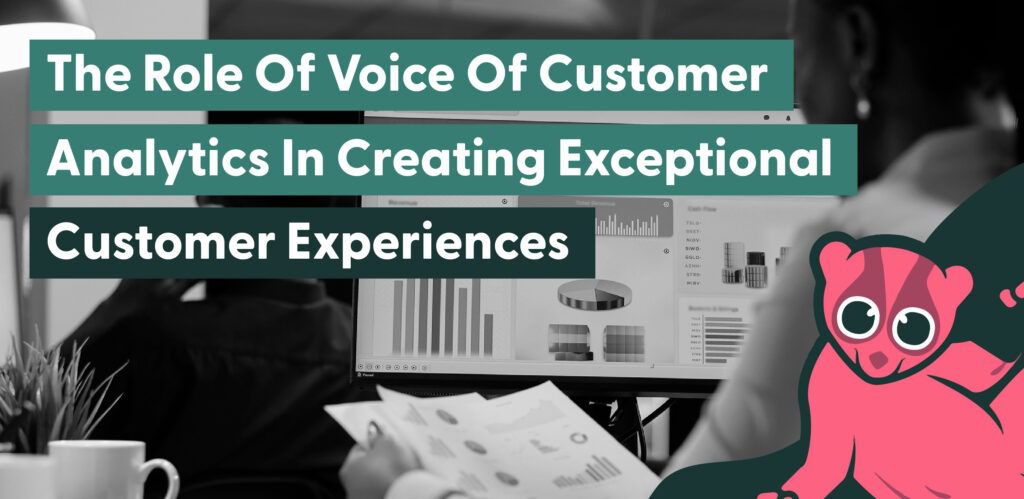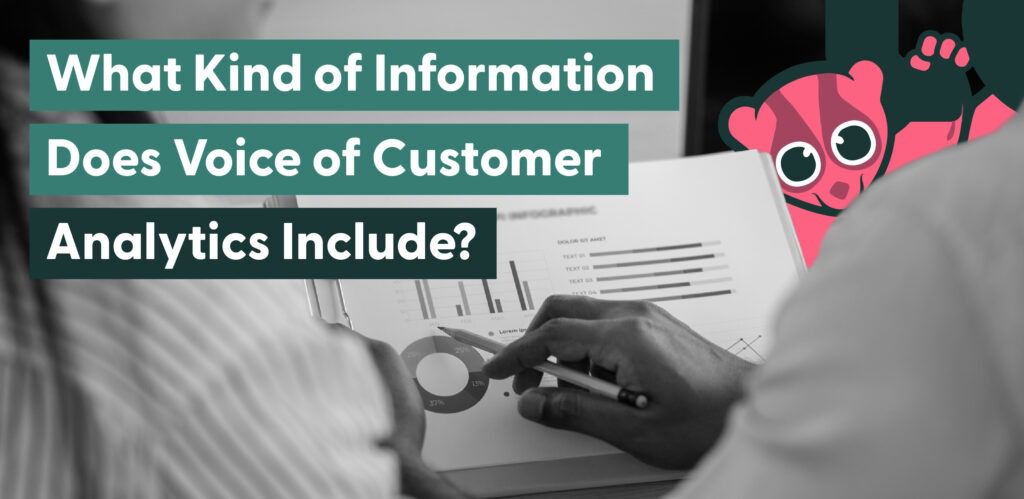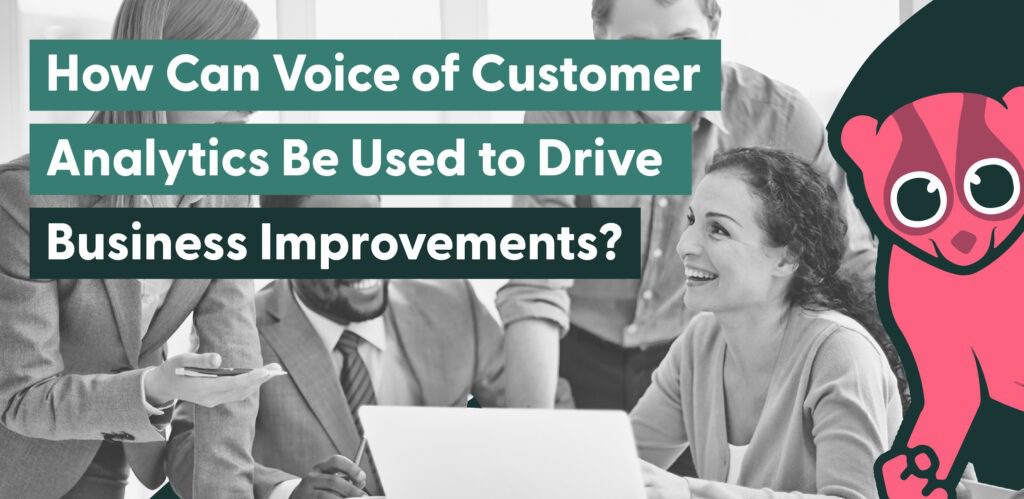Understanding your customers is vital to the success of your business. How do you keep your customers happy if you don’t understand how they feel about your brand, product, and overall customer experience?
But, understanding your customers is difficult. Humans are complex, with varying emotions and behaviors.
You’d think that understanding your customers’ emotions involves intuition and experience—but relying on these human skills can lead to biases. Instead, collecting data is one of the best ways of understanding your customers.
But we have good news! Through Voice of the Customer (VoC) analytics, you can gain a deeper understanding of your customers, their opinions, and the experience they have with your product.
In this article, we’ll explore what the voice of customer analytics are. We’ll also unpack how you can use VoC data to drive tangible business improvements that elevate customer satisfaction and boost your bottom line.
What Is Voice of the Customer Analytics?
Voice of the Customer analytics provides a collective overview of your customer’s experiences and opinions of your business, product, and customer experience (CX).
This has traditionally been created by collecting feedback from your customers in the form of surveys, social media listening, and other forms of text analysis.
The idea is that the best way to understand customers is to elicit their feedback and then use those comments and data to benchmark your performance and improve.
However, newer approaches to voice of the customer now use actual customer interactions to derive insight and intelligence without the need for direct feedback like surveys.
Whichever approach you choose, the goal of voice of the customer analysis is to drive improvements in every aspect of your business, not just your customer service.
The main reasons why you need voice of the customer analytics are to:
- Understand their needs: When you analyze customer feedback, you’ll have a better understanding of what your customers need and want from a product like yours. You’ll also understand more about what they expect from your offering and customer experience.
- Identify pain points: VoC helps you uncover what problems your customers face and shows you how your offerings and your customer service can solve these issues.
- Determine if they’re satisfied: Analyzing customer feedback allows you to measure how satisfied your customers are with the experience you deliver.
This information provides you with actionable insights that allow you to make informed decisions about developing your product, how you train your agents, and even your policies.
What Kind of Information Does Voice of the Customer Analytics Include?
Here’s what data has typically been included in voice of the customer analytics:
ℹ️ Customer satisfaction (CSAT) scores
Typically gathered through surveys or interactive voice response (IVR) after phone calls, customer satisfaction (CSAT) scores are a direct way to get feedback from customers. It measures how satisfied they are with a product or customer service interaction.
This customer feedback data is beneficial to understanding the customer’s mindset at a specific time or event, such as post-purchase or after a customer service interaction.
ℹ️ Net promoter score (NPS)
A net promoter score (NPS) is determined by asking customers to rate how likely they are to recommend your business to a friend or colleague on a scale of 0 to 10. This is valuable data as it indicates customer loyalty, which is vital if you want to increase sales.
ℹ️ Customer sentiment
Customer sentiment analysis is typically provided using a basic keyword match to a defined set of positive or negative words. However, this approach has generally been replaced by AI to analyze sentiment based on customer interactions in context, such as within a customer service conversation.
Understanding customer sentiment isn’t just about how your customers feel. It’s also about how well your customer service team is performing when it comes to turning negative sentiment into positive sentiment.
ℹ️ Customer intent (via Keywords or Contact Drivers)
By analyzing the types of language within customer free-text survey responses and customer service interactions, you’ll understand the most frequent terms used.
However, using keywords alone can be limiting since words may have multiple meanings depending on the context.
Conversation intelligence platforms take a more contextual approach, using semantic analysis to understand how a word is used, not just whether it is present.
Loris takes this further and derives contact drivers, which are the reason for customer outreach. This is a more accurate way to determine what is being said, how customers feel about that topic, and how frequently an issue occurs.
ℹ️ Demographics
Connecting customer feedback with demographic data like age, location, gender, and income can help you identify trends and patterns that may otherwise be challenging to pinpoint.
Perhaps an advertising campaign you’re running isn’t landing well with your customers. This could be because you’re targeting the wrong demographic with the wrong marketing message.
ℹ️ Their stage in the customer journey
There are five stages of the customer journey: awareness, consideration, purchase, onboarding, and active use or renewal.
Knowing where in the journey your customers are facing issues is critical if you want to improve the overall experience you provide.
Part of collecting customer feedback is segmenting this data based on your customer’s stage of the purchasing journey when they contact you.
If your data shows that your customers are unhappy at the renewal stage, your insights might reveal that contract extensions are too expensive. In this case, you may want to reward customer loyalty with a renewal discount.
How Can Voice of the Customer Analytics Be Used to Drive Business Improvements?
The first step in using voice of the customer analytics is to collect feedback from customers.
While organizations traditionally relied on surveys for this information, the main disadvantage was the lack of participation. Surveys have low response rates, meaning they’re not representative of your entire customer base.
In addition, the types of customers who respond to surveys can lead to further inaccuracy since they tend to be the ones who are happiest with your product and those who are the most upset.
This creates an average of two extremes but with little insight on how to improve.
Instead of surveys, you need to have data from all your customer interactions if you want insights that are deep enough for you to use to improve your business. Relying on limited perspectives like single channels or surveys leads to biases and inaccuracies in your insights.
Once you’ve collected all this information, you’ll have enough big data to start extracting valuable insights that you can use to address whichever part of your business the feedback is aimed at.
Here are some examples of insights you may receive about your business and what you can do about them:
👉 Let’s say your voice of the customer data analysis shows that your CSAT scores are noticeably low at the onboarding stage of the customer journey.
It could be that your representatives need more coaching on how to guide customers through the onboarding process more effectively. Or perhaps your onboarding process is too complex and needs to be redesigned to make it quicker and easier for customers to come on board.
👉 If you’re getting a lot of negative feedback regarding returns of your product, it may be that:
- Customers don’t think your return policy is fair, which is something you could revise.
- There may also be a problem with the product itself.
- Your customer service team doesn’t fully understand the returns process themselves.
👉 If customer service interactions often don’t result in a positive sentiment, your customer service agents may need more information and resources to resolve complaints.
Or your representatives may be repeating information already provided by your chatbot, or worse, asking for information already provided to your chatbot. This annoys already frustrated customers and wastes valuable time unnecessarily.
👉 Let’s say your product development team has recently launched a new feature, and your insights reveal that customers are contacting you saying the feature is difficult to use. This is feedback you can give to your development team, which they can use to improve (or remove) the feature. They can also do it before it’s too late and you lose customers.
These are all parts of your business and your customer experience that could be improved when you have the right, actionable insights from voice of the customer analytics.
💡 A Word from Our Experts
Our Head of Product, Ronen Ben-Ari, says that many platforms only use customer service insights to improve customer service. However, when you gain insights into how your customers feel, it should feed into every aspect of your business, including your product development, marketing, and customer experience teams.
How to Collect Voice of the Customer Data Manually
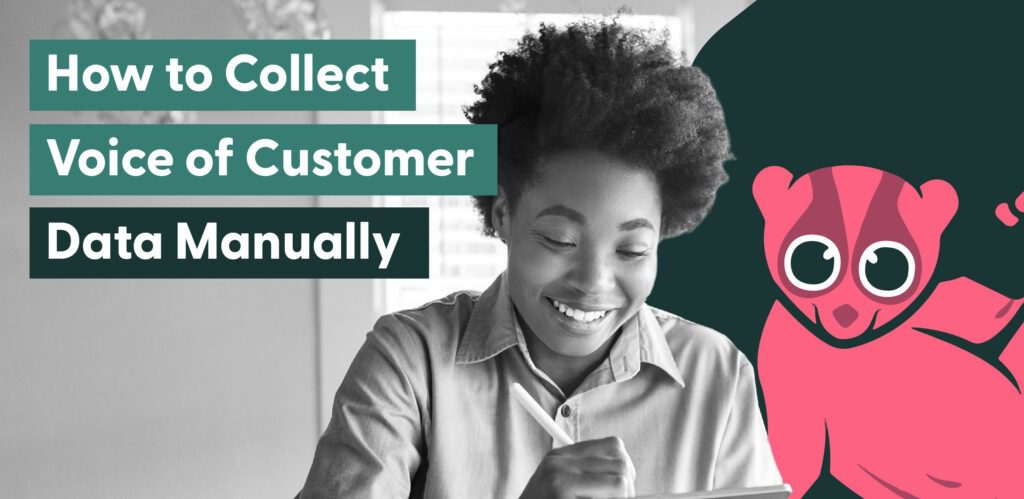
Generating actionable insights from voice of the customer analytics starts with collecting data.
There are two options here: either you can collect this data manually as part of a customer analytics program, or you can use an AI conversational intelligence platform.
Let’s look at how you would go about collecting feedback manually:
📊 Online customer surveys
You can send surveys and feedback forms to your customers via email, in-app, SMS, or even direct follow-up phone calls for more in-depth feedback.
📊 Social media
It’s likely your customers are talking about your brand on social media channels. This is an important platform to collect data from as it will include feedback from a wide spectrum of customers, including those who might not respond to traditional surveys.
📊 Listening to calls
It’s vital to analyze the calls your contact center receives to collect voice of the customer analytics data.
This is another source of valuable customer feedback, and you can pick up on things like their emotions, where their sentiment is being directed, and how your agents are resolving issues.
📊 Reading chat transcripts and emails
Much like phone calls, live chats, and emails are an important source of customer data analytics.
⚠️ The problem with manual data collection
The next step in the voice of the customer analytics process is to standardize your data. You need to assign themes or tags to common datasets and ensure it’s represented in a standard way so that you can analyze them. Typically, you’d capture this data in a spreadsheet.
You’ll need to extract voice of the customer analytics from this data. These insights could be your product is too expensive, or you’re taking too long to answer phone calls.
Finally, you’ll need to take action to remedy the issues you’ve identified from your voice of the customer analytics.
However, there are several drawbacks to collecting and analyzing data this way:
- It’s difficult and time-consuming: Collecting all the data mentioned above can take up huge amounts of time and resources. This is time that could be better spent on improving your customer experience.
- You need to know how to navigate large spreadsheets: Feeding all your data into spreadsheets can make them cumbersome and difficult to use. You’ll need people who are highly skilled in using spreadsheets to carry out your analysis.
- You don’t build an accurate bigger picture: It’s impossible to analyze data manually to create a bigger picture of how your business is performing overall.
- You’re not getting real-time customer feedback: Sending out surveys means you get customer feedback sometime after their last interaction with you. By then, it could be too late to fix the issue they complained about.
- You’re headed for an information overload: The sheer amount of data will likely be too much for a single employee or team to be able to work with, understand or make sense of.
How AI Can Help Generate Voice of the Customer Analytics Insights

A conversation intelligence tool like Loris uses AI to automatically collect, transcribe, and score every customer service interaction across all your channels. This gives you better, high-quality voice of the customer insight.
Thanks to powerful AI, all your customer interactions provide critical patterns and trends, providing you with in-depth voice of the customer analytics insights.
This means that your team doesn’t have to spend time manually listening to calls, transcribing conversations, and scoring interactions to determine VoC. It also means they don’t have to try spot patterns themselves.
AI conversation intelligence also highlights customer feedback and VoC analytics in real-time. This allows you to identify issues and resolve them as they emerge, rather than them becoming larger problems that are harder to fix.
💡 A Word from Our Experts
Our Head of Product, Ronen Ben-Ari, says: “Many people believe that you should approach voice of the customer analytics by starting with the question—what do you want the findings of your VoC analysis to answer?
At Loris, we believe the best approach is to start with the data and let it inform your decision-making. Having the right insights extracted by AI is the most effective starting point for your analysis. It keeps you open-minded and helps you address real business problems that your customers think are the most important for you to know.”
Why Is Generating Voice of Customer Analytics Important?
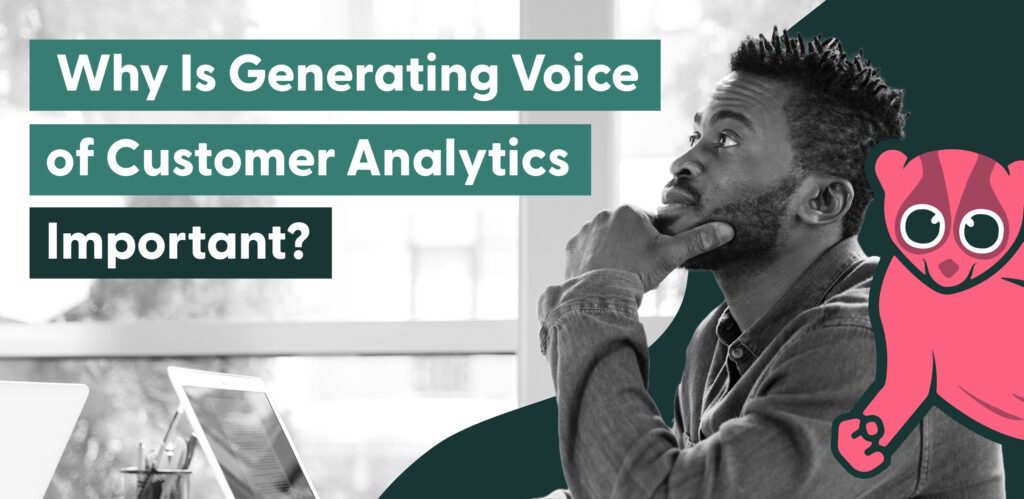
Now that you know how to run a data-driven voice of the customer program, let’s look at the reasons why AI-driven VoC analytics is important for your business:
✅ Less guesswork
As you have data that’s been informed by real customer feedback, you no longer have to guess why your customers are dissatisfied—your insights will tell you why.
✅ More informed product development
If you know what your customers don’t like about your product, you can provide your team with insights to help them improve it. They then know what to fix, change, or do differently to meet customer expectations and deliver a better experience.
✅ Improved processes
The insights you get access to will help you determine where your processes are falling short. You may want to improve your returns process if your insights reveal customers are unhappy with it.
✅ Better customer service
Your data will tell you exactly what issues your customers are facing. This insight will help you coach your customer service agents on how to resolve these issues and provide them with resources to address complaints quickly.
✅ Improved customer retention
Retaining customers is a lot cheaper than attracting new ones. You can use the insights you get from voice of the customer analytics to improve customer retention by ensuring a better customer experience.
✅ Get more word-of-mouth referrals
If you provide an excellent customer experience thanks to your VoC insights, customers are more likely to recommend your product to friends and colleagues. This gets you more word-of-mouth referrals, which are invaluable for your business.
The Ultimate Solution for Voice of the Customer Insights
Understanding your customers is essential to running a successful business. You’ll know how your customers feel, what they like, and what they don’t like. This helps you improve your product, processes, and customer experience—ultimately impacting your bottom line.
Loris is an AI-powered conversation intelligence platform that analyzes data from all your customer interactions to provide you with actionable insights. Rather than getting a few pieces of customer feedback from a sample of calls or surveys, with Loris, you get the big picture.
This helps you make improvements throughout your business that keep your customers happy, increasing sales, conversions, and retention.
Explore our website and speak with one of our experts to learn more about Loris. We’re excited to show you how the right insights can help you improve not just your customer service but your entire operation.
